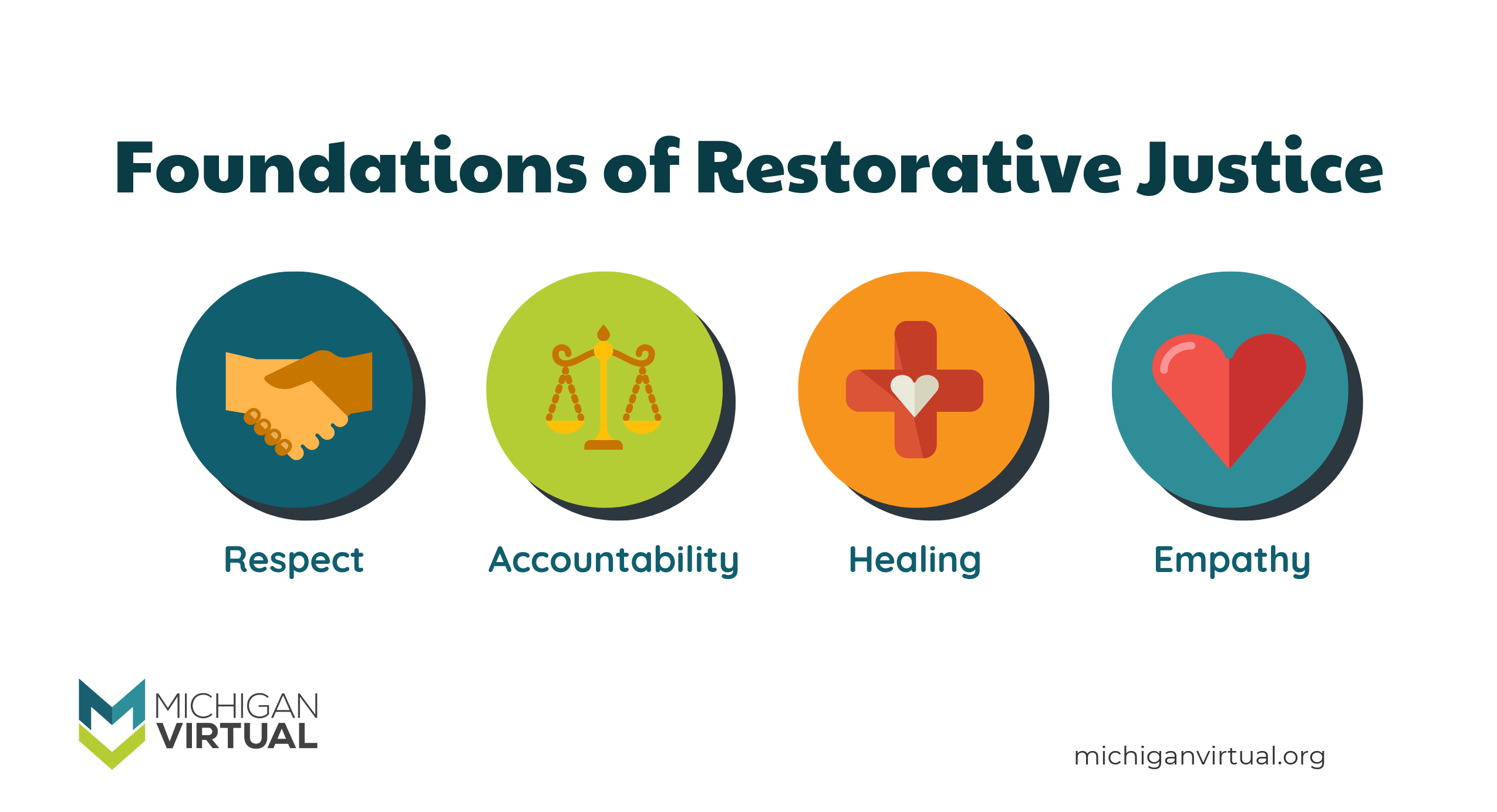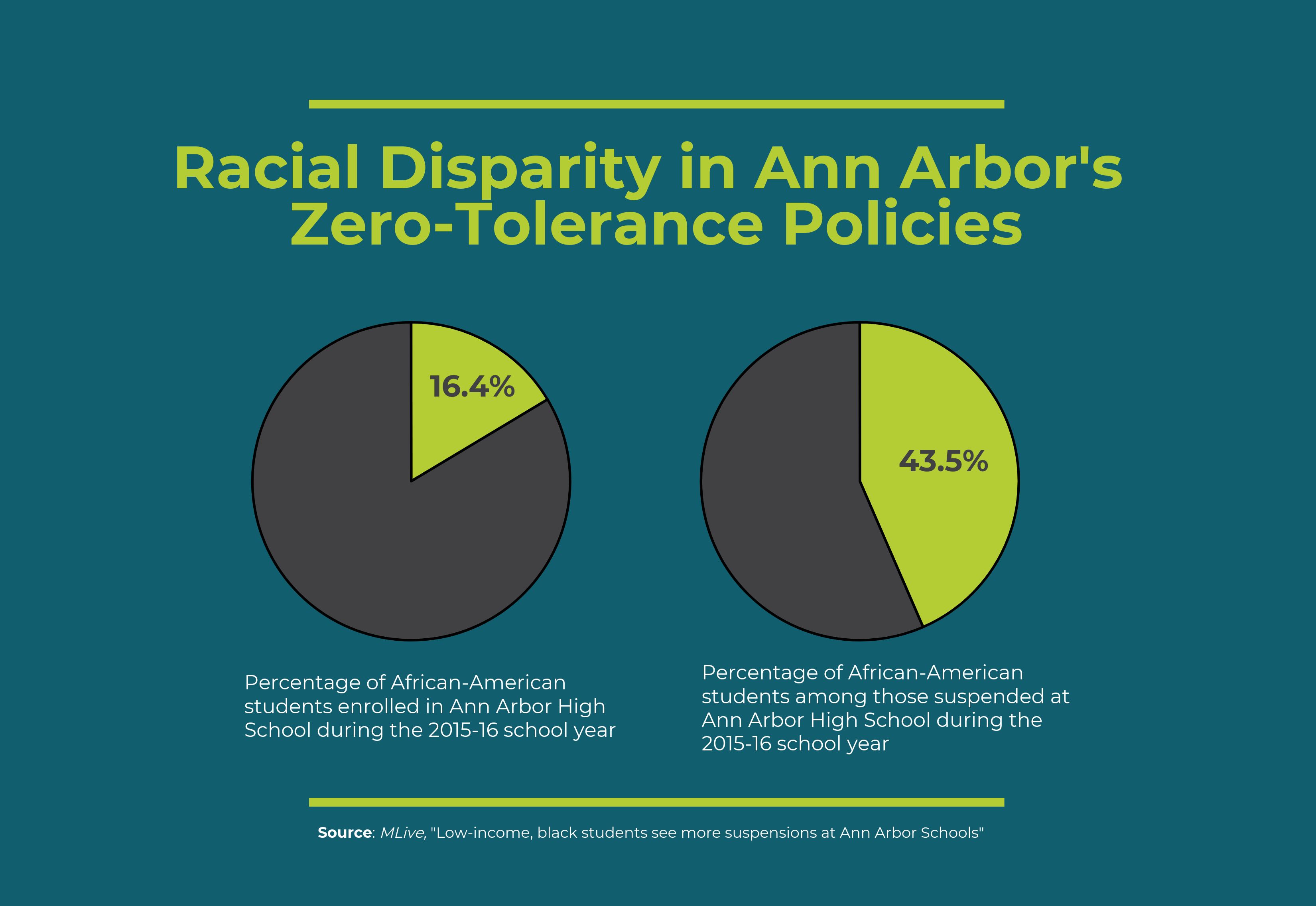Provides opportunities for victims offenders and communities affected by a crime to communicate directly or. Restorative justice is sometimes defined by what it is not.

Foundations Of Restorative Justice Restorative Justice Restoration Foundation
It emphasizes accountability making amends and if they are interested facilitated meetings between victims offenders and other persons.

Restorative justice. Restorative Justice is an approach to justice that aims to involve the parties to a dispute and others affected by the harm victims offenders families concerned and community members in collectively identifying harms needs and obligations through accepting responsibilities making restitution and taking measures to prevent a recurrence of the incident and promoting reconciliation. Restorative justice is an alternative to retributive justice. First it views criminal acts more comprehensively -- rather than defining crime as simply lawbreaking it.
The Centre for Restorative Justice provides training and professional development services to ensure that conflict can be resolved in constructive ways in an array of different environments for. Its core idea is that the main official response to crime should be retribution in the form of punishment proportional to the offence. Because crime and war hurt justice should heal.
The Centre for Restorative Justice provides the following services and resources. Offenders with an opportunity to repair the harm done by the offence. The typical response to bad behavior is punishment.
The restorative justice process helped to restore the relationship between two young people and their families. In the restorative justice process. The Victorian Law Reform Commission VLRC has considered the use of restorative justice practices in the context of family violence and sexual offences.
When relationships break down as they will it is about having fair responsive processes in place in which everyone can share their stories. Restorative Justice Project - 12-Month Program Evaluation - 4 Case Study 2. At a restorative justice conference you will have the chance to.
Retributive justice is a foundational element of modern criminal justice systems. Āhurutanga We provide a place of warmth and safety While restorative conversations can be difficult we create safe spaces where people can express themselves without fear of being made to feel uncomfortable or unsafe on the basis of their race culture sexual orientation gender age beliefs. Restorative justice conferences are a form of face-to-face meeting that includes support people such as friends and family members of either party.
All members of the school learn to bravely engage in that community and learn from honest and sometimes difficult conversations. When victims offenders and community members meet to decide how to do that the results can be transformational. Restorative justice is a fundamental change in how you respond to rule violations and misbehavior said Ron Claassen an expert and pioneer in the field.
The restorative justice program in the ACT is broad operating at every stage of the criminal process and enabling multiple agencies to refer cases to such processes. Restorative justice repairs the harm caused by crime. Decide how to put right the harm youve caused.
We spent three years getting. The Centre for Justice. Several years ago at a workshop on restorative practices at the national Free Minds Free People conference teachers spoke up during the discussion period.
So a just response must address those harms as well as the wrongdoing. In contrast to the traditional justice system in Canada which seeks to establish a punishment for each act of wrongdoing assuming that will. Restorative justice resolves disciplinary problems in a cooperative and constructive way Schools like OUSD use a three-tiered approach focused on prevention intervention and.
Restorative justice is different from contemporary criminal justice in several ways. Restorative justice refers to an approach to justice that seeks to repair harm by providing an opportunity for those harmed and those who take responsibility for the harm to communicate about and address their needs in the aftermath of a crime Footnote 1. Reforming Justice For 20 years.
AARJ promotes effective decision-making dispute resolution and conflict management to restore right relations in justice systems and in educational work faith and residential communities indeed wherever. Restorative justice is a justice philosophy and process through which communities can address crime without the help of the formal criminal justice system. Restorative justice conference brings together a personpeople who have been harmed the personpeople who caused the harm and other impacted community members eg.
A restorative justice conference is an informal facilitated meeting between a victim offender support people and any other approved people such as community representatives or interpreters. Restorative justice views crime as more than breaking the law it also causes harm to people relationships and the community. Restorative Justice as the Finger in the Dike.
Find ways to make. Implementing restorative justice to address behavior without critically reflecting on how curriculum content or pedagogy perpetuates aggression is limiting. Take responsibility for your offending.
The person responsible for the offence gives an account of what happened and the person harmed describes how they were. HEALING RELATIONSHIPS A 10 year old boy from a remote Queensland Community was referred by police to a restorative justice conference following an incident with a peer at school. Restorative justice is a theory of justice that emphasizes repairing the harm caused or revealed by criminal behaviour.
If the parties are willing the best way to do this is to help them meet to discuss those harms and how to about bring resolution. The Australian Association for Restorative Justice AARJ is a Professional Association of individuals and organisations working with restorative justice and restorative practices. The ACT Restorative Justice Units RJU primary objective is to provide restorative justice to members of the ACT community who have been affected by an offence in a forum that provides.
Restorative justice is a framework that educators can use to create safe supportive spaces in our schools. Training and Professional Development. It is best accomplished through cooperative processes that include all stakeholders.
Restorative Justice RJ is a way of addressing conflict and crime that enables the person who caused the harm people who were affected by the harm and the community to create a meaningful solution. A restorative meeting typically begins with the facilitator explaining why the process is happening and outlining ground rules. Restorative justice is partly about the aim that justice processes repair the harm done through domination whether that is the domination of crime of war or of school bullying.
Apologise to your victim. The emphasis is on being heard understood having questions answered taking responsibility showing remorse and contributing. The RJU operates according to the Crimes Restorative Justice Act 2004 and has been.
Schools Educational policy makers teachers support staff parents and. Other approaches are available if they are unable or unwilling. Restorative justice has a place for passive responsibility for past wrongs but is more concerned with stakeholders taking active responsibility for justice as a better.
In its review of family violence it concluded that establishing a. Restorative justice recognises the communal bonds that unite victim offender and community. Family neighbour shopkeeper etc to have a conversation about what occurred.

Racial Disparity In Ann Arbor S Zero Tolerance Policies Racial Restorative Justice Ann Arbor
Restorative Circles Restorative Justice Restoration